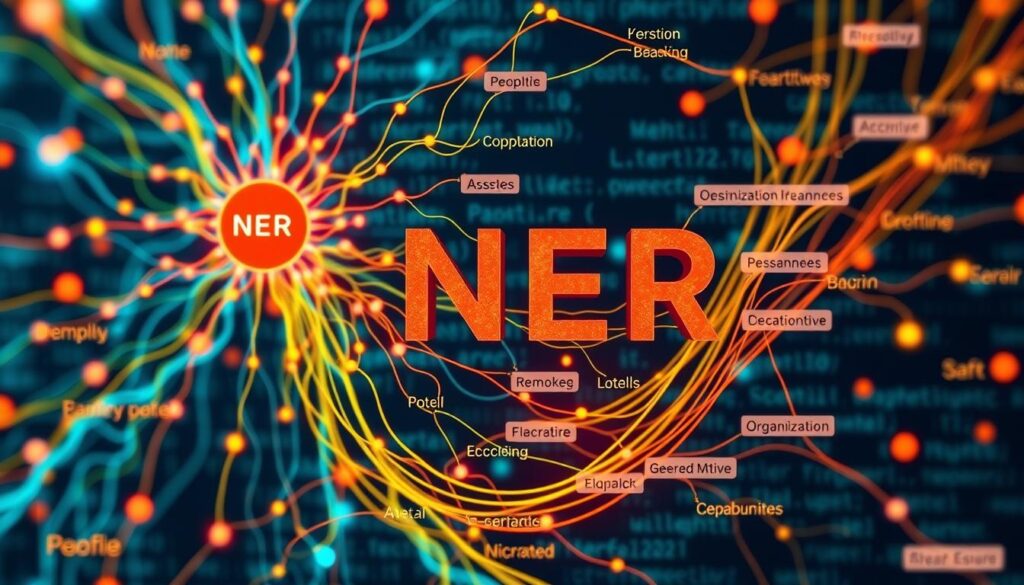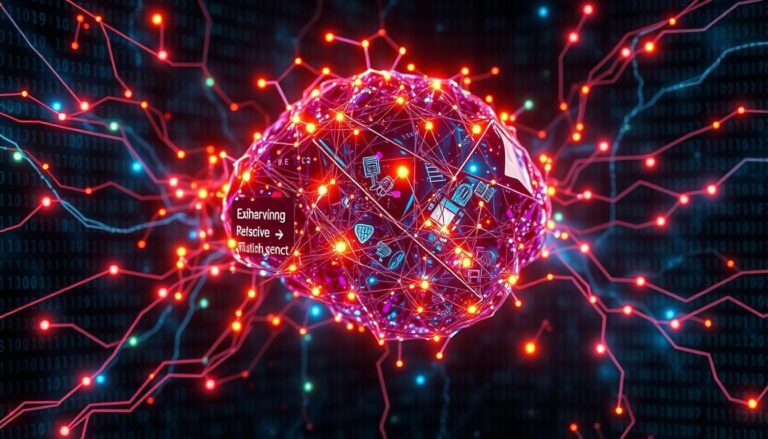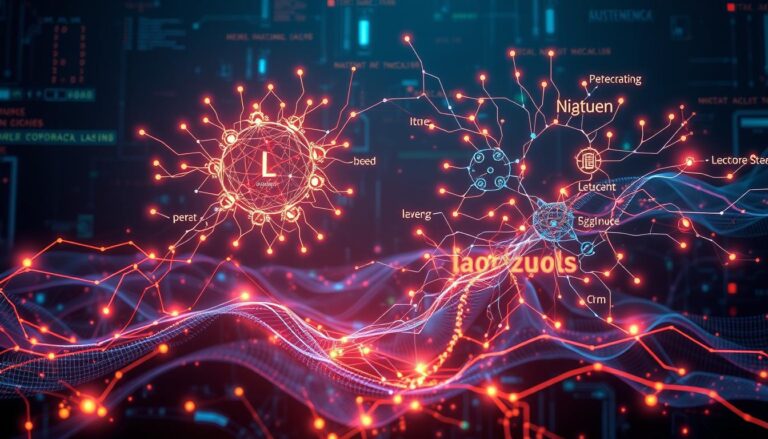What is named entity recognition (NER) in NLP?
Named entity recognition (NER) is a way to extract information from text. It finds and sorts out key information in text called named entities. These entities are important subjects in a text, like names, places, companies, events, and products.
NER helps machines understand and sort these entities. This is useful for tasks like text summarization, building knowledge graphs, and answering questions.
NER turns raw texts into organized information. This helps with data analysis, finding information, and building knowledge graphs in NLP. It makes data more understandable and useful for various tasks.
Introduction to Named Entity Recognition
Definition and Purpose of NER
Named Entity Recognition (NER) is a key part of extracting information from text. It helps identify and sort named entities in unstructured text. This process categorizes important information into specific groups.
An entity is something mentioned often in the text, like names, organizations, or places. The goal of NER is to help machines understand and sort these entities. This is useful for tasks like summarizing text, creating knowledge graphs, and answering questions.
| Entity Type | Description |
|---|---|
| Person | Names of individuals |
| Organization | Names of companies, agencies, institutions, etc. |
| Location | Names of geographical entities such as countries, cities, rivers, etc. |
| Time | Expressions of time such as dates, times, and durations |
| Quantity | Numerical values including money, percentages, and measurements |
NER is vital for extracting information from text. It helps machines grasp the structure and meaning of text. This way, they can pull out valuable insights and metadata from unstructured data.
How NER Works
Named entity recognition (NER) is key in natural language processing (NLP). It finds and sorts specific things in text. The NER process includes steps like getting data, cleaning it, making features, training models, and testing them. It helps find and sort things like names, places, and companies in text.
NER Methods and Algorithms
Many NER techniques and algorithms are used to solve this problem. These include rule-based methods, machine learning NER, and mixtures of both.
Rule-based systems use set rules and grammar to spot and sort entities. These rules are made by language experts. Machine learning NER trains AI models on labeled data. It uses algorithms like CRFs to learn and predict.
New NER techniques include unsupervised learning, bootstrapping, and neural networks. The right method depends on the task, data, and text complexity.

Every NER technique aims to accurately find and sort entities in text. This skill is used in many fields, like healthcare, finance, and education.
Natural Language Processing and NER
Named Entity Recognition (NER) is key in natural language processing (NLP) systems. It makes other NLP tasks like tagging and parsing more precise. This helps machines understand text better and its meaning.
NLP, which includes NER, is about how computers and humans talk through language. It’s used in chatbots, sentiment analysis, search engines, and more. These systems use NER to find important info in text, making them work better.
Spark NLP is a top choice for NER and other NLP tasks. It’s much faster than spaCy, a well-known NLP library, but still trains models well. It uses Spark clusters to speed up text data processing.
Spark NLP has many pre-built models for tasks like finding names, analyzing feelings, and classifying documents. It supports over 200 languages and has many pre-trained models. This makes it great for working with different languages.
NLP and NER are getting better, and their uses are growing. They’re used in many fields like finding info, chatbots, and legal documents. By using NER, companies can find important insights in text, helping them make better choices and improve customer service.
Applications of NER
Named Entity Recognition (NER) is used in many fields. In chatbots and virtual assistants, it helps understand what users want. It finds important information in their requests.
In customer support, NER sorts out customer feedback. It groups complaints by product and finds common problems.
In finance, NER pulls out numbers from reports and social media. It helps analyze profits and risks. In healthcare, it finds key details in medical records. This supports better patient care and research.
In higher education, NER makes it easier to find and summarize academic papers. This helps students, researchers, and teachers.
In HR, NER makes hiring faster by extracting resume info. News providers use it to sort articles and spot trends. Recommendation engines and search engines also use NER. They make their results more relevant and accurate.
| Industry | NER Applications |
|---|---|
| Chatbots and Virtual Assistants | Understand user requests and queries accurately by identifying critical entities |
| Customer Support | Organize customer feedback and complaints by product name and identify common or trending issues |
| Finance | Extract figures from financial reports and social media to analyze profitability and credit risk |
| Healthcare | Extract critical information from medical records to support patient care and analysis |
| Higher Education | Enable students, researchers, and professors to quickly summarize and find relevant information in academic literature |
| HR | Streamline recruitment and hiring by extracting information from resumes |
| News Providers | Analyze articles and social media posts to categorize content and identify trends |
| Recommendation Engines and Search Engines | Improve the relevancy and accuracy of their results |

Implementing NER in Python
Named Entity Recognition (NER) is a key Natural Language Processing (NLP) technique. It finds and sorts named entities in text into categories like people, organizations, and places. To do this in Python, we use libraries like SpaCy and NLTK.
Using SpaCy for NER
SpaCy is fast and easy to use, offering advanced NLP features, including NER. First, install SpaCy and download the English model. Then, use spacy.load('en_core_web_sm') to start processing English text.
Using NLTK for NER
NLTK is a top platform for working with human language in Python. It has over 100 trained models for NLP tasks. NLTK’s nltk.ne_chunk() function can spot and sort named entities in text.
Both SpaCy and NLTK let you tweak NER models for your needs. This is great for special cases where default models don’t work well.
| NLP Library | Strengths | Weaknesses |
|---|---|---|
| SpaCy |
|
|
| NLTK |
|
|
Using SpaCy and NLTK, you can create strong NER systems in Python. These systems help extract insights from text, useful for many NLP tasks.
Conclusion
Named entity recognition (NER) is key in natural language processing (NLP). It helps machines understand text by finding and sorting important entities. This makes language analysis more accurate and meaningful.
NER is used in many fields like chatbots, finance, and healthcare. It helps in customer support, education, and more. This technology is crucial for better understanding and analysis of text.
As NLP advances, NER’s importance will grow. It helps make sense of huge data amounts. It’s vital for search engines and other tools to work better.
NER also helps in understanding emotions and opinions in text. This is useful for many tasks like translation and answering questions. It’s a big help in making technology smarter.
The future of NER looks bright with NLP, machine learning, and AI. It will help us get insights from text data. This will improve how we make decisions and interact with information.







